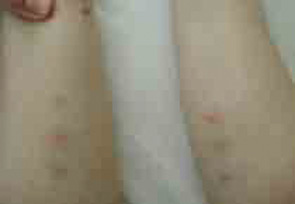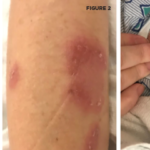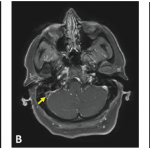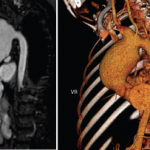BS is most commonly seen in Mediterranean countries and the Far East along the ancient Silk Road, suggesting that the putative agent(s)—including several genetic factors such as human leukocyte antigen–B51 (HLA-B51)—may have spread along this path. In field surveys carried out in Turkey, the prevalence of BS was found to be between 20 and 421 cases per 100,000 adults. The disease is reported to be less frequent in the rest of the world, with an estimated prevalence ranging from 0.64 per 100,000 persons in the U.K. to 6.4 per 100,000 in Spain and 5.2 per 100,000 in the U.S. However, a more specific analysis of Turkish people living in Germany has demonstrated a distinctly high prevalence rate of 77 cases per 100,000 individuals. These findings may indicate the greater significance of genetic factors over environmental factors in the etiology.
Some manifestations of BS show regional differences. GI involvement is more frequently observed in patients from the Far East than among those from Turkey. Although a positive pathergy test is common among patients in countries and regions ranging from Turkey and the Mediterranean to Japan, it is less commonly seen in Northern European countries and the U.S. Finally, the HLA-B51 association is most pronounced among patients from the Middle and Far East.
The usual onset of the syndrome is in the third decade of life; onset of BS is uncommon among the older population (older than 50 years) and in children. Both sexes are equally affected; however, the syndrome runs a more severe disease course in men and in the young.

Mucocutaneous features are the most common presenting symptoms of the disease, although ocular, vascular, and neurological symptoms are the most serious symptoms. Almost all patients have recurrent oral ulceration. These ulcers are frequently the first observed symptom and may precede the other manifestations of BS by many years. Although aphthae are usually multiple and occur frequently in BS, they are indistinguishable from those of recurrent oral ulcers due to other causes. Genital ulcers usually occur on the scrotum in males, but they are infrequent on the shaft or on the glans penis; urethritis or dysuria is not a part of BS. In females, both major and minor labia are affected. The ulcers usually heal in two to four weeks; a large ulcer will frequently leave a scar, while a small ulcer and those on the minor labia heal without scarring. Both types of ulcers can be painful, even though painful oral ulcers are seen more frequently than genital ones.



